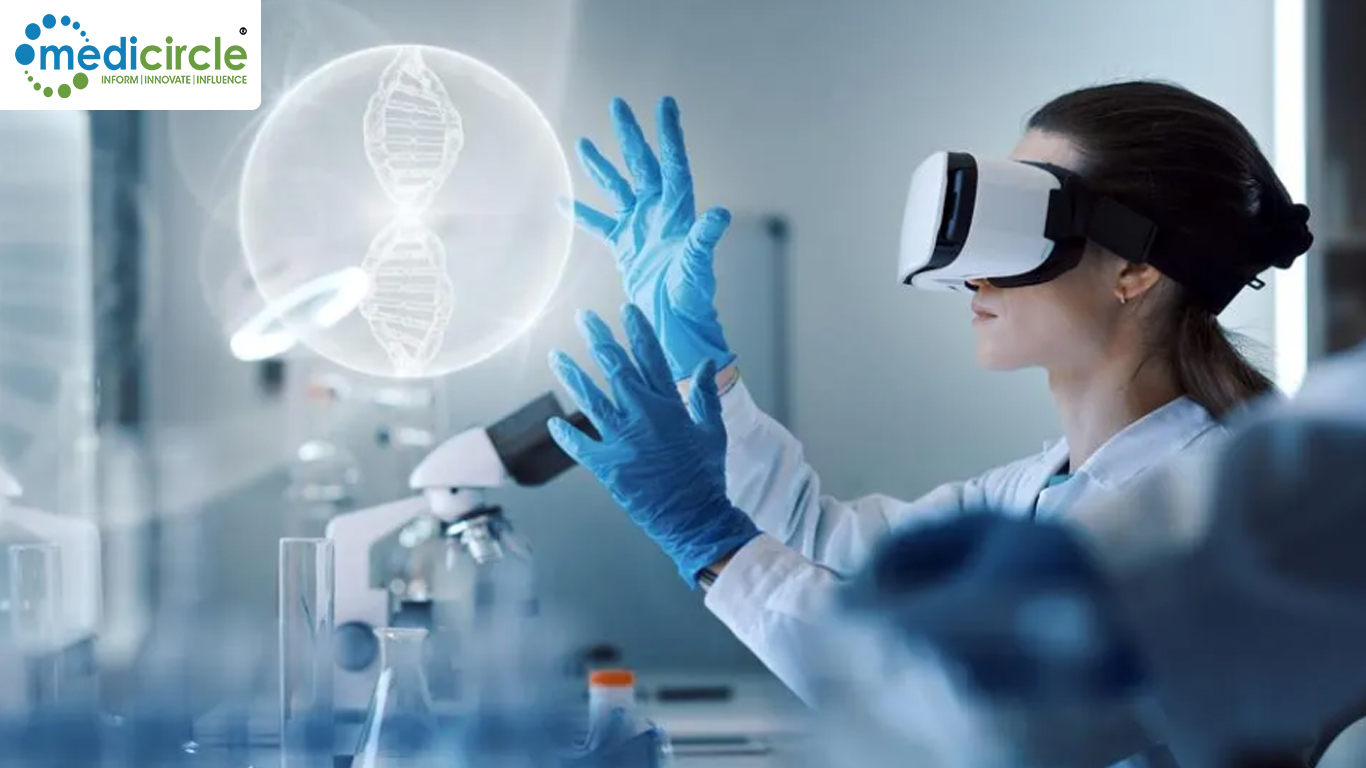Cancer continues to be one of the most challenging diseases, affecting millions and claiming lives every year. While treatments have advanced over the decades, researchers are constantly searching for ways to improve the effectiveness and safety of cancer therapies. Recently, scientists have made ground-breaking progress in cancer treatment by using a futuristic concept—‘digital twins.’
The idea of a digital twin is to create a digital replica of a cancer patient, allowing researchers to test various treatments without exposing the patient to potential risks. Through the use of complex algorithms and powerful data analysis, scientists can now simulate clinical trials and predict how different treatments might affect an individual’s unique cancer profile. This advancement not only improves the chances of finding effective therapies but also marks a leap forward in personalized medicine.
At the recent 36th EORTC-NCI-AACR Symposium in Barcelona, a technology called FarrSight-Twin was introduced. Developed by a team of scientists led by Dr. Uzma Asghar at The Royal Marsden NHS Foundation Trust in London, FarrSight-Twin has the potential to change the landscape of cancer treatment. Using advanced algorithms originally developed for astrophysics (specifically for detecting black holes), this technology enables scientists to create a digital twin, or a virtual model, of each cancer patient.
This digital twin is more than just a data point; it’s a comprehensive replica that incorporates vast amounts of biological, molecular, and historical cancer data. By creating a model that mirrors the patient’s unique cancer profile, researchers can simulate the effects of various treatments in a virtual environment. This process helps predict how well a patient might respond to a specific therapy, potentially reducing the need for traditional, time-consuming clinical trials.
Traditional cancer trials often require a placebo group, which means that some patients don’t receive the experimental treatment. For those battling aggressive cancers, this can be a controversial aspect of clinical trials. With digital twins, however, researchers can simulate control groups virtually, eliminating the need for some patients to go untreated.
In practical terms, this means that scientists can run what’s known as “virtual clinical trials.” Each patient’s digital twin can undergo multiple simulations, each with a different treatment approach, providing invaluable data on likely responses. For patients with advanced cancer, this technology offers a lifeline, making it possible to identify the most promising treatments faster and with more precision.
Creating a digital twin involves massive data collection. The researchers behind FarrSight-Twin use comprehensive data sets gathered from past cancer cases. Each digital twin is tailored to the individual patient, incorporating their unique biological information such as DNA sequences, cellular behaviour, and even lifestyle factors. This individualized approach represents a shift from one-size-fits-all treatments toward therapies customized for the individual.
Data from thousands of cases, specifically those involving breast, pancreatic, and ovarian cancers, have been instrumental in testing and validating the FarrSight-Twin. By using this data, scientists can better understand patterns in cancer development and response to treatment, which can lead to more effective and targeted therapies.
When tested in trials, FarrSight-Twin has shown promising results. Researchers used digital twins to recommend treatments for patients, and the outcomes were impressive: 75% of patients who received treatment based on FarrSight-Twin’s recommendations experienced tumor shrinkage. In comparison, only 53.5% of patients who received other treatments saw similar improvements.
These results suggest that digital twins could vastly improve the accuracy of treatment predictions, leading to more successful outcomes for patients. The benefits are clear: patients who are recommended the right treatment from the start are more likely to respond positively, which means less time spent undergoing ineffective therapies and fewer side effects from treatments that don’t work.
While the current focus is on certain types of cancer, the potential applications for digital twins are vast. As the technology matures, FarrSight-Twin could be adapted to simulate other forms of cancer, helping a wider range of patients. Beyond cancer, this technology could revolutionize personalized treatment approaches for numerous diseases.
With advancements in artificial intelligence and machine learning, the FarrSight-Twin could also evolve to provide real-time insights for doctors as they monitor the progress of treatments. For example, if a patient’s tumour doesn’t respond as predicted, the digital twin could suggest adjustments in the therapy plan, enabling a more adaptive approach to treatment.
Personalized medicine is no longer a concept confined to theoretical discussions, it is becoming a reality. By using digital twins, doctors and researchers can offer individualized treatment plans based on each patient’s unique biology. This approach contrasts with conventional methods, where patients receive treatments based on generalized guidelines rather than personalized assessments.
In essence, a digital twin serves as a ‘test subject’ that allows for risk-free experimentation. Before a patient even undergoes a single chemotherapy session, doctors can simulate multiple treatment scenarios on their digital twin to determine the most promising approach. This reduces trial and error, increases treatment efficacy, and minimizes unnecessary side effects.
One of the most promising aspects of digital twin technology is the potential to reduce or eliminate the need for placebo trials. In traditional trials, some patients are given a placebo, meaning they do not receive the experimental treatment. This approach can raise ethical concerns, particularly for patients with advanced-stage cancers. By using digital twins as control groups, researchers can collect necessary data without depriving any patient of potentially life-saving treatments.
In addition, digital twin technology empowers patients by involving them in the decision-making process. Patients are increasingly looking for more control over their treatment options, and the detailed insights provided by their digital twin could help them make informed choices. With this technology, patients can work with their doctors to select treatments based on predicted outcomes, rather than being passive participants in a standardized process.
Despite the promising results, digital twin technology is still in its early stages and faces several challenges. One significant hurdle is the complexity of data collection. Developing a digital twin requires an immense amount of biological and clinical data, which can be difficult to obtain and process. Privacy concerns also come into play, as patient data must be securely handled to protect individuals’ medical information.
Another challenge lies in ensuring the accuracy of the simulations. The algorithms used in FarrSight-Twin are sophisticated, but cancer is a complex disease with many variables. It will take time and continued research to refine these models and ensure they consistently provide reliable predictions.
As FarrSight-Twin and similar technologies are further refined, there is also the potential for integration into hospital systems around the world. Widespread adoption will require collaboration between medical institutions, technology companies, and regulatory bodies. However, the potential benefits (shorter treatment timelines, reduced side effects, and more successful outcomes) make it a worthy endeavour.
As we look to the future, the potential of digital twin technology to change cancer treatment cannot be overstated. By allowing researchers to conduct virtual trials on digital replicas of patients, FarrSight-Twin brings us closer to a world where each patient receives a treatment uniquely tailored to their needs. This personalization promises not only to improve survival rates but also to enhance quality of life for cancer patients.
Furthermore, as we continue to develop and expand this technology, the insights gained could inform preventive measures and early detection methods, potentially reducing the incidence of cancer. In this way, digital twins could play a role not only in treatment but in the broader fight against cancer.
Digital twin technology, represented by FarrSight-Twin, is a remarkable step forward in cancer treatment. By harnessing the power of vast data and sophisticated simulations, scientists are transforming the traditional approach to cancer care. Patients can receive treatments that are more likely to work for their specific condition, avoiding the risks and side effects of ineffective therapies.
The journey to integrate digital twins into mainstream cancer treatment may be challenging, but the potential to change lives is undeniable. In the years to come, we may see digital twins not just as a new tool but as an essential part of every cancer patient’s journey to recovery. With innovations like FarrSight-Twin, we are moving toward a future where personalized, precise, and ethical cancer treatment becomes the standard, offering hope to millions and reshaping the way we view cancer care.

 In the years to come, we may see digital twins not just as a new tool but as an essential part of every cancer patient’s journey to recovery.
In the years to come, we may see digital twins not just as a new tool but as an essential part of every cancer patient’s journey to recovery.





.jpeg)














.jpeg)









.jpg)


.jpg)
